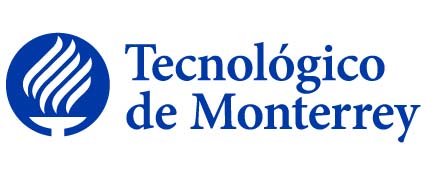
|
|||||
Disciplina asociada:Matemáticas |
|||||
Escuela:
Ingeniería y Ciencias
|
|||||
Departamento Académico:
Ciencias
|
|||||
Programas académicos: |
|||||
Competencias que se desarrollan: |
|||||
Competencias que se Evaluan: |
|||||
Requisitos:Haber Cursado MA1031 |
|||||
Equivalencia:No tiene. |
|||||
Intención del curso en el contexto general del plan de estudios: |
|||||
|
|
|||||
Objetivo general de la Unidad de Formación: |
|||||
|
Al terminar la unidad de formación el alumno: - Toma decisiones en la solución de problemas en condiciones de incertidumbre y diferentes niveles de complejidad relacionados con las ciencias naturales y exactas. - Desarrolla escenarios en la toma de decisiones con base en la interpretación de los patrones de interacción. - Construye modelos estocásticos y/o deterministas adaptados al contexto establecido por las necesidades del problema en cuestión. - Analiza la información proveniente de modelos, considerando la toma de decisiones como objetivo final. - Extrae información relevante de grandes bases de datos estructurados utilizando métodos estadísticos y herramientas tecnológicas convenientes. -Analiza la realidad con base en hechos, a través de un razonamiento lógico inductivo-deductivo que permite resolver problemas e interrogantes con criterios de validez y objetividad. - Comunica con precisión y sentido sus ideas y argumentos en forma escrita utilizando los recursos necesarios acordes a las necesidades del contexto. |
|||||
Técnica didáctica sugerida: |
|||||
| No especificado | |||||
Bibliografía sugerida: |
|||||
|
LIBROS DE TEXTO: * Devore, J. L., Probability and statistics for engineers and scientists, 9th edition., Boston, MA : Brooks/Cole, Cengage Learning, 2016, spa, * Reinhart, Alex, Statistics done wrong : the woefully complete guide, San Francisco : No Starch Press, ©2015, eng, 1593276206 (pbk.) * Lohr, Sharon L, Sampling: design and analysis, 2a ed., Brooks/Cole. Cengage Learning Editors, 2009, spa, 9780495105275 |
|||||
Perfil del Profesor: |
|||||
|
( (270501)Maestría en Estadística ) ; ( (270101)Maestría en Matemáticas ) ; ( (270301)Maestría en Matemáticas Aplicadas ) ; ( (110102)Maestría en Inteligencia Artificial /Robótica ) ; ( (143501)Maestría en Ingeniería Industrial ) ; ( (143701)Maestría en Investigación de Operaciones ) ; ( (400101)Maestría en Ciencias Físicas ) ; ( (400801)Maestría en Física ) ; ( (270501)Doctorado en Estadística ) ; ( (270101)Doctorado en Matemáticas ) ; ( (270301)Doctorado en Matemáticas Aplicadas ) ; ( (110102)Doctorado en Inteligencia Artificial /Robótica ) ; ( (143501)Doctorado en Ingeniería Industrial ) ; ( (143701)Doctorado en Investigación de Operaciones ) ; ( (400101)Doctorado en Ciencias Físicas ) ; ( (400801)Doctorado en Física ) CIP: 270501, 270101, 270301, 110102, 143501, 143701, 400101, 400801 |
|||||
|
|||||
Discipline:Mathematics |
|||||
School:
Engineering and Sciences
|
|||||
Academic Department:
Sciences
|
|||||
Programs: |
|||||
Competitions:SICI0203B ; SICI0303B ; SEG0503A ; SEG0201A ; |
|||||
Prerequisites:MA1031 |
|||||
Equivalences:None. |
|||||
Course intention within the general study plan context: |
|||||
|
|
|||||
Course objective: |
|||||
|
On completing the educational unit, students: - Make decisions to solve problems in conditions of uncertainty and different levels of complexity related to natural and exact sciences. - Develop scenarios in decision making based on the interpretation of interaction patterns. - Build stochastic and/or deterministic models adapted to the context established by the requirements of the problem in question. - Analyze the information from the models, considering decision making as the final objective. - Extract relevant data from large structured databases, using the appropriate statistical methods and technological tools. - Analyze reality based on facts through inductive-deductive logical reasoning that makes it possible to solve problems and questions with valid, objective criteria. - Communicate in writing with precision and sense their ideas and arguments using the necessary resources, according to the requirements of the context. |
|||||
Teaching and learning tecnique: |
|||||
| Not Specified | |||||
Suggested Bibliography: |
|||||
|
TEXT BOOKS: * Devore, J. L., Probability and statistics for engineers and scientists, 9th edition., Boston, MA : Brooks/Cole, Cengage Learning, 2016, spa, * Reinhart, Alex, Statistics done wrong : the woefully complete guide, San Francisco : No Starch Press, ©2015, eng, 1593276206 (pbk.) * Lohr, Sharon L, Sampling: design and analysis, 2a ed., Brooks/Cole. Cengage Learning Editors, 2009, spa, 9780495105275 |
|||||
Academic credentials required to teach the course: |
|||||
|
( (270501)Master Degree in Statistics ) ; ( (270101)Master Degree in Mathematics ) ; ( (270301)Master Degree in Applied Mathematics ) ; ( (110102)Master Degree in Artificial Intelligence/Robotics ) ; ( (143501)Master Degree in Industrial Engineering ) ; ( (143701)Master Degree in Operations Research ) ; ( (400101)Master Degree in Physical Sciences ) ; ( (400801)Master Degree in Physics ) ; ( (270501)Doctoral Degree in Statistics ) ; ( (270101)Doctoral Degree in Mathematics ) ; ( (270301)Doctoral Degree in Applied Mathematics ) ; ( (110102)Doctoral Degree in Artificial Intelligence/Robotics ) ; ( (143501)Doctoral Degree in Industrial Engineering ) ; ( (143701)Doctoral Degree in Operations Research ) ; ( (400101)Doctoral Degree in Physical Sciences ) ; ( (400801)Doctoral Degree in Physics ) CIP: 270501, 270101, 270301, 110102, 143501, 143701, 400101, 400801 |
|||||